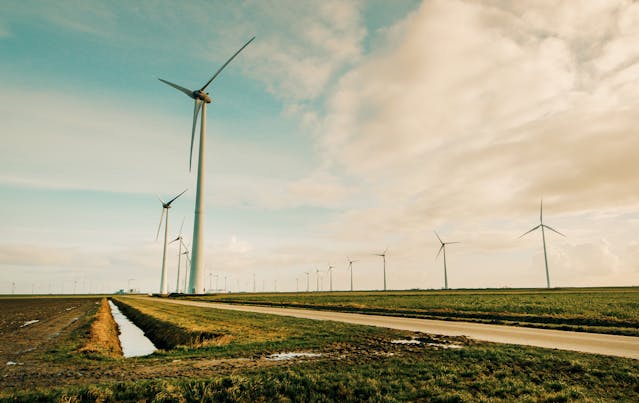Silent spinners revolve in the air while bright roofs absorb sunlight. Clinics, libraries, and schools can only tap neat grids. Coal is replaced in factories with greener fuel. Behind solar farms are actually massive batteries. Together in 2025, all these actions mentioned below will help towns, cities, and farms to have fairer, safer, and greener energy.
Solar Panels
Many rooftops carry shiny solar panels that turn sunlight into clean power. As panels feed additional power onto the nearby grid, homeowners see meters turn backwards. The fast declining panel prices in recent years make the installation of them simple for homes, businesses, and schools. In regions promoting renewable growth, like North Carolina’s clean energy programs, adoption has surged. With sporadic cleaning and brief wire inspections, maintenance stays basic. Neighbors discuss protecting the environment and saving money on bills. Also, creating local employment for installation and technicians for the installation of solar panels is bright. Viewing rows of panels on rooftops increases people’s awareness of the reach of sustainable energy. Every bright day gives every house more energy and less need for coal or gas plants.
City Skylines with Gentle Wind Spinners
Tall poles now hang slender wind spinners on city edges that silently collect light breezes. These little turbines were intended by engineers to fit on park boundaries and between buildings. They pull air from street level where wind swirls, so even modest gusts still cause turbines to whirl. Each second, sensors track wind speed and then change blade angles to provide constant motion free from noise. These spinners are added by city designers to new parks and roofs in order to increase local energy. Young children see blades revolve like sluggish pinwheels against a blue sky. In crowded cities, its soft movement gives clean energy close at hand. Urban wind now provides streetlights and city residences with a consistent supply of new electricity.
Community Facilities Driven by Renewable Energy
Every library, classroom, and health facility connects to a smart grid operated on solar and wind farms. Small display panels housed in these centers indicate real-time green power levels and energy utilization. Viewing graphs light up when panels and turbines feed the grid helps students understand sustainable energy. Extra battery packs are part of backup systems so that electricity never cuts out during significant occurrences. Local employees arrange basic leak or wire break checks and learn to read meters. Clean running centers not only offer a good example but also save money on power costs. These structures are shining centers where people come to discover how green energy runs in daily life.
Manufacturing Embraces Natural Energy Change
Many former coal-burning enterprises now run ovens and presses on hydrogen or greener gases. Modern fuel injectors, which burn gas more completely and reduce soot, replace traditional burners used in plant operations. To trap dust and microscopic particles before they enter the atmosphere, they also include scrubbers in exhaust lines. Before running each new burner all day, engineers check them for safety and efficiency. Workers pick up portable tools for tracking flame color and temperature. That little adjustment drastically reduces manufacturing emissions and maintains considerably cleaner air close to buildings. When floor hummers run on natural fuel, smoke stacks darken less, and local air quality is better for everyone around.
Big Batteries Holding Tomorrow’s Power
To save energy for quiet evenings and overcast days, big battery farms follow solar fields and wind parks. Hundreds of battery modules are linked by engineers using clever controllers that charge as electricity flows in and discharge when demand rises. To protect cells, these banks are housed in metal containers chilled by fans. Every minute, operators view dashboards displaying charge levels and temperatures. Stored energy may illuminate hospitals and houses until personnel restore power lines. A storm can take off wires. Large batteries also enable grid operators to balance demand and supply, therefore preventing flickering of lights. That quiet storage maintains green energy flowing even in the absence of light and wind.
Conclusion
Emphasizing sustainable energy by 2025 will pay out handsomely. Homes’ power comes from shiny panels. Urban spinners abound amid city lights. Smart grids teach new lessons. Fuel burned in factories burns more cleanly. Large batteries ensure consistent power. Every action combined helps to reduce pollution, minimize expenses, and create a better environment for everybody.

